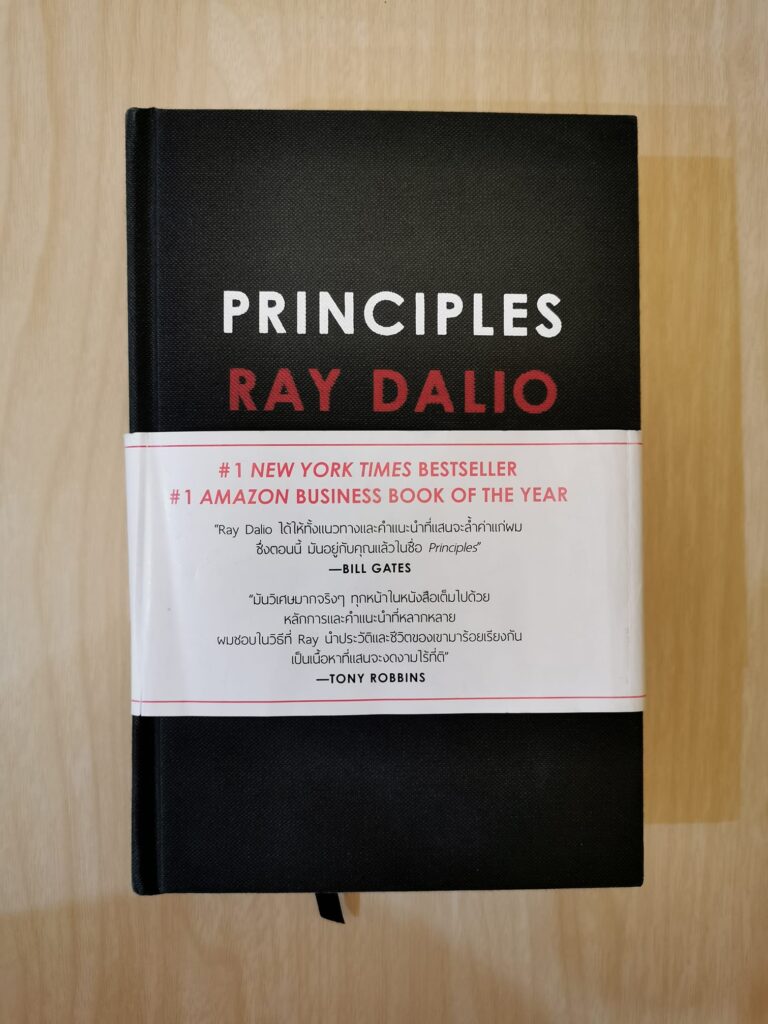Here’s a book that was the talk of the town (at least where I live anyway) last year. It cannot be anything except “Principles” by Ray Dalio. I have to admit that many parts of this book is an eye opener for me personally. Let me take some time (and some space) in this blog post to talk a little bit about the first part of “Principles.”

The Beginning
The first part of “Principles” was mostly the author’s life story. My previous sentence may put some of you off. However, I have to say that it was not boring at all. That is why I want to talk about this a little.
Before going any further, I would like to have a small disclaimer here. I am only writing what I can remember and what I am writing is based on my personal understanding of the content only.
Idea Meritocracy
The first thing that actually stuck in my head from reading this book is a working method called “Idea Meritocracy.” This is a working system that encourages people who do not agree on something to come and work together. It sounds strange, doesn’t it? I mean why would you have people who viewed things differently in the same room? Would they not argue all the time?
What if we think about it this way?
Usually, there are times that we think we are “right.” Ray Dalio suggested that we changed from always saying that we were right to “how do you know that you are right?”
So what?
Ray said that we should try to find someone who had the same goal but thought differently from us. What happened would be everyone would challenge everyone else and test everyone else’s ideas. In the end, everyone would be able to increase the chance of being right and, more importantly, being successful.
Baseball Cards
The second and my personal favourite is using the concept of baseball cards at work. Let me explain using my own analogy (it’s only because people in my part of the world are not that familiar with baseball cards.)
If you have played a football video game such as FIFA (of any year), we will see that every player has a score associated with his abilities. All the players have attributes that constitute their overall abilities. For example, Player A has the score of 89 for his speed and 76 for shooting.
How does this related to work?
Ray Dalio explained it like this. He used the exact same method at work. He and his company had a way to evaluate and measure skills, attitudes amongst others of his employees to see who had the score of what for which attribute.
Why did he do this?
The answer was to get the right man for the right job. It was just like us picking the right player for our team. By having the scores of attributes, we would be able to place players in their most suitable position.
Recording
The third thing that I thought was a great approach to help solve problems was that Ray Dalio and all of his employees recorded every problem they faced. Why? So that they knew how to solve those problems, how well it worked, and how it could be improved. This leads us to the fourth and final point that I would like to discuss in this blog post.
History
Ray Dalio said it was important to study history. It was because all events that had occurred almost always happen again. … Ray Dalio himself studied history, especially social and economic history. He found that almost everything was a cycle. They happened. They ended. They happened again.
This got us back to the third point which was the recording of problems and events. Ray Dalio and his team believed that it would definitely be useful in the future as surely what had happened would happen again. When that happens, they will know how to deal with it.
That’s it … for now.
That’s enough for this post, I think. This is, as I said, only the very first part of “Principles” which was mainly about the author’s own life story. Having said that, I think I have already gained and learned so much from it. The next chapters will definitely be worth reading.
